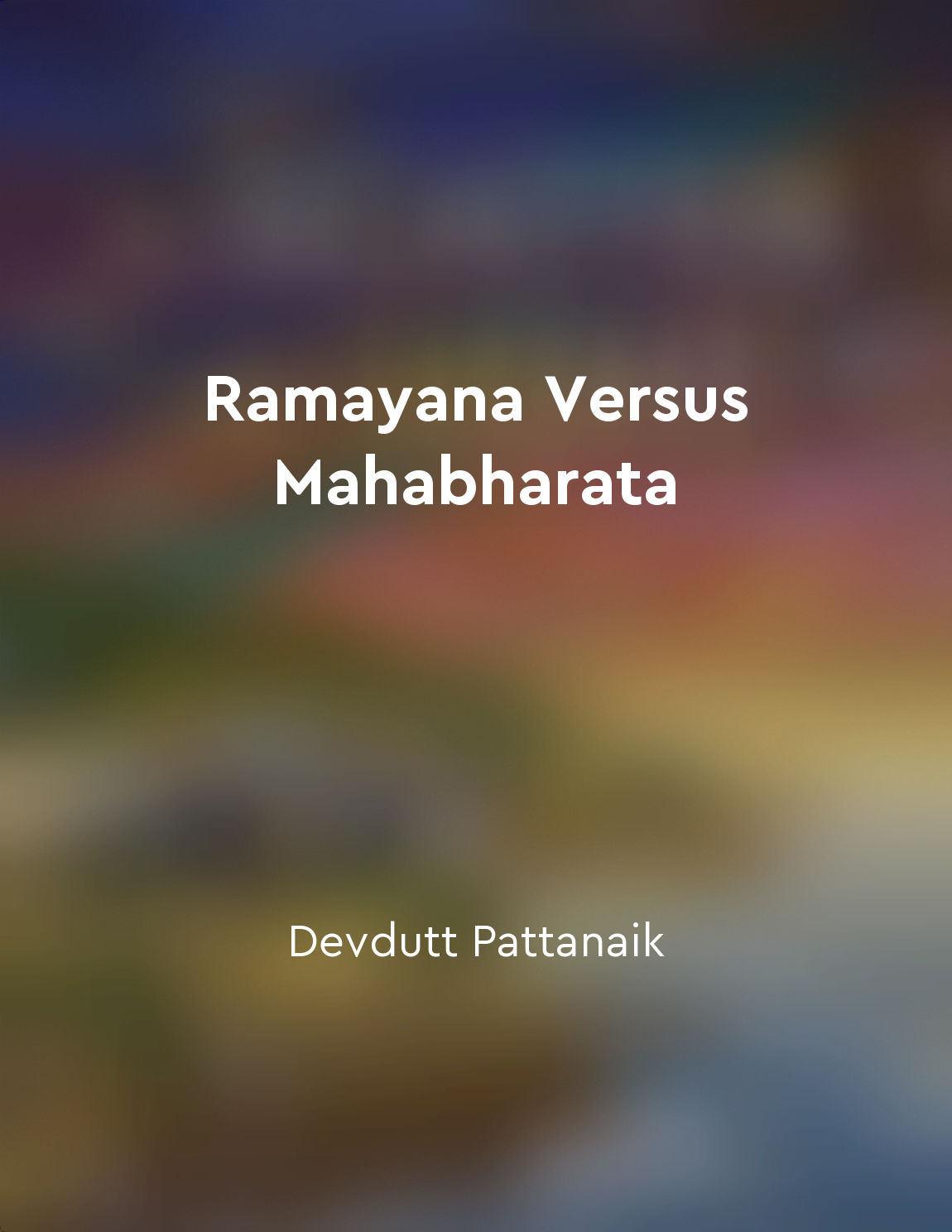Characters in Ramayana follow codes, Mahabharata characters break them from "summary" of Ramayana Versus Mahabharata by Devdutt Pattanaik
In Ramayana, characters are portrayed as adhering strongly to codes of conduct. They are idealized and expected to follow the rules set by society. The characters in Ramayana are guided by dharma, duty, honor, and loyalty. They prioritize righteousness and morality above all else. Rama, the protagonist, is the epitome of virtue and righteousness. He is the obedient son, the ideal husband, and the noble king. His actions are always in accordance with dharma, and he never wavers from his duty. Sita, his wife, is the embodiment of purity and loyalty. She willingly follows Rama into exile and remains faithful to him despite facing numerous hardships.
On the other hand, the characters in Mahabharata are known for their complex and often flawed personalities. They constantly grapple with moral dilemmas and are not bound by the same strict codes as the characters in Ramayana. The Pandavas, for example, resort to deceit and manipulation in order to achieve their goals. They are not always truthful or honorable in their actions. Even Krishna, who is considered the incarnation of the divine, manipulates events to ensure the victory of the Pandavas in the Kurukshetra war.
The characters in Mahabharata are driven by their desires and ambitions, often leading them to break societal norms and moral boundaries. They are more human in their behavior, with flaws and weaknesses that make them relatable to the audience. Unlike the characters in Ramayana, who are almost god-like in their perfection, the characters in Mahabharata are more nuanced and multidimensional. They are capable of both great acts of heroism and grave mistakes.The contrast between the two epics lies in their portrayal of human behavior and morality. Ramayana upholds the importance of following codes and upholding dharma, while Mahabharata explores the complexities of human nature and the gray areas of morality. Both epics offer valuable insights into the human experience and continue to resonate with audiences to this day.

Open in app
The road to your goals is in your pocket! Download the Oter App to continue reading your Microbooks from anywhere, anytime.


